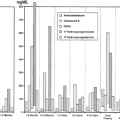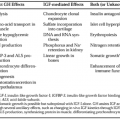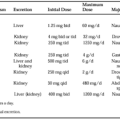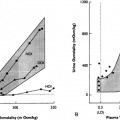ENDOCRINE RHYTHMS
Eve Van Cauter
Pronounced temporal oscillations ranging in period from a few minutes to a year occur throughout the endocrine system. These oscillations are part of the wide variety of rhythms that exist in all living organisms. Rhythms with a period of ˜24 hours have been called circadian, from the Latin circa diem, meaning “around a day.” According to the terminology of circadian biology, 24-hour rhythms should only be referred to as circadian if they are primarily driven by an endogenous clock system. However, it has become increasingly apparent that nearly all 24-hour rhythms partly reflect the influence of an endogenous circadian pacemaker located in the hypothalamus and partly the influence of other events occurring with a 24-hour periodicity, such as the alternation of waking and sleeping, light and dark, food intake, and postural changes. Thus, the use of the term circadian is often extended to all diurnal variations recurring regularly at a time interval of ˜24 hours.
Circadian rhythms have been used to separate two further classes of biologic rhythms: ultradian rhythms, with periods shorter than 24 hours, and infradian rhythms, with periods longer than 24 hours. The pulsatile release of pituitary hormones belongs to the ultradian range. The menstrual cycle and the seasonal variations in the reproductive system are infradian rhythms. Reproducible circadian changes occur in the secretory pattern of the vast majority of hormones.









